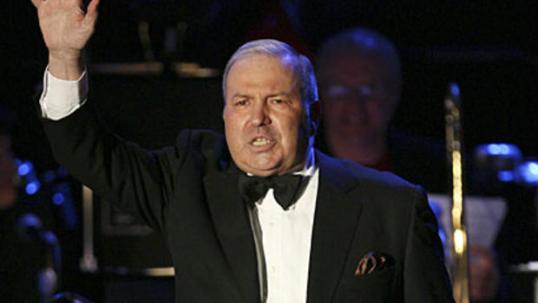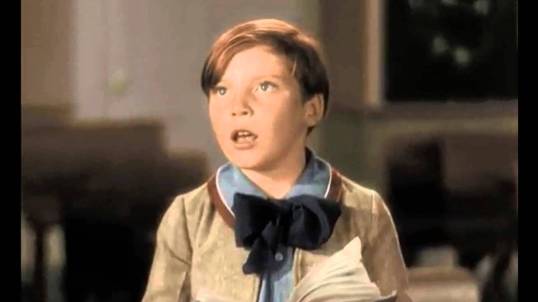You would probably be justified in thinking that there’s no way that a great film could be made about those weirdos who occasionally show up at your front door and pressure you to buy a dozen magazine subscriptions (the better to help them win a trip to Europe or go to drug rehab or get a college education) but Andrea Arnold has managed to do just that with American Honey.
American Honey features several scenes of the film’s characters swarming through neighborhoods, knocking on doors and launching into their sales pitch. We see how the group’s top salesman, Jake (Shia LaBeouf, for once playing a role that makes perfect use of his “permanently full of shit” image), changes his approach from house to house and we listen as he explains his selling technique. When the smarmy but charming Jake knocks on a door and then starts to flirt with the teenage girl who answers, I immediately started to have flashbacks to when I was going to college and, every summer, the magazine people would descend on Denton, looking for gullible students. I once opened the door of my apartment and got trapped into a long conversation with a cute but annoyingly hyper guy who ended every sentence by holding up his hand and going, “High five!” He very well could have been Jake.
We also watch as Krystal (Riley Keough), the group’s somewhat frightening manager, gives everyone their assignments and constantly pressures her crew to bring in as much money as possible. Though the film never quite becomes an expose, it doesn’t shy away from the fact that the whole door-to-door magazine subscription industry is essentially an unregulated scam that largely survives by exploiting people who don’t have anywhere else to go. As Krystal puts it, if someone can’t make their sales, that person can easily just be left on the side of the road.
That said, American Honey isn’t really about selling magazines. What is it about? It’s about many things. It’s a road movie, one that lasts nearly three hours and which features a narrative that at times seems to meander almost aimlessly. (Of course, that randomness is deceptive. Andrea Arnold knows exactly what she’s doing.) It’s a tour of what has been termed flyover county, with the crew invading neighborhoods both wealthy and poor. (When they arrive in a poor South Dakota town, Krystal announces, “I got a lot of relatives here!”) It’s a celebration of youth and impulsiveness because, even though the magazine crew is being exploited, they’re also having a really good time. Most of the members of the crew were played by nonactors and they bring a rough authenticity to their roles. They may be outcasts but, if just for a little while, they’ve formed their own family. (Albeit a family that lives in vans, cheap motels, and occasionally a deserted farmouse…)
Ultimately, the film is coming-of-age story. When we first meet Star (Sasha Lane), she’s 18 and she’s living in Oklahoma. Star was born in Texas and her meth-addict mother died when she was young. Now that she’s in Oklahoma, she’s working as some sort of live-in nanny, taking care of two children while their mother dances at a redneck bar and their father continually gropes her. When she sees Jake and the magazine crew dancing in a supermarket (and getting thrown out by security), she’s immediately drawn to them. When Jake offers her a position with the crew, it’s a chance to both escape and to belong. Krystal asks if Star is 18. Star says that she is. Krystal asks if anyone is going to miss Star after she leaves. Star says no one will.
And soon, Star is in the back of a van, being driven across the country. Krystal doesn’t like or trust her. Jake may or may not be using her. But, for the first time, Star has a family. For the first time, she belongs.
And, she soon finds herself discovering and seeing things that she would never have had a chance to see otherwise. One morning, she sits out on a hill and watches as an equally curious bear approaches her. When she and Jake attempt to sell in a rich neighborhood, she watches with barely disguised jealousy as a spoiled teenager celebrates her birthday. In one of the film’s best scenes, she ends up attending an impromptu barbecue with three cowboys and we find ourselves, much like her, trying to figure out just how much she can trust these seemingly friendly men. In one of film’s saddest scenes, she stops at a house and discovers three neglected children and a junkie mother. And, in one of the film’s most disturbing scenes, an oil rig worker says he doesn’t want any magazines but he’ll pay her $1,000 for a hand job.
Through it all, we watch as Star approaches each new situation with equal doses of fear and hope, confidence and doubt. And like her, we find ourselves wondering how far she should go and who she should trust. Sasha Lane is in every scene of the film and gives an amazingly good performance, one that is all the more remarkable for the fact that this was her first movie. Much like Katie Jarvis in Arnold’s Fish Tank, Sasha Lane was discovered by the director. (Jarvis was famously discovered after yelling at her boyfriend on a train platform. Lane was discovered under somewhat less contentious circumstances, while sunbathing on the beach.) Sasha Lane gives a brave and unflinchingly honest performance. At times, I found myself cringing because I could totally understand what Star was feeling and what she was going through. (Though I never ended up selling magazines, I went through my lost phase.) There was not a single false note to be found in Lane’s performance.
Special mention should also be made of Riley Keough’s work as the manipulative Krystal. Keough alternates between being harsh and being strangely likable with such skill that it’s impossible not to share both Star’s fear and her occasional admiration of her.
Ultimately, though, this is Andrea Arnold’s film. The British director approaches the so-called heartland of America with an outsider’s view and she captures some of the most unexpected and strikingly beautiful images of 2016. American Honey is a powerful, demanding, and occasionally enigmatic movie, one that feels almost like the type of film that Terrence Malick would make if Malick could curb his tendency to descend into self-parody. American Honey is one of the best of the year.











